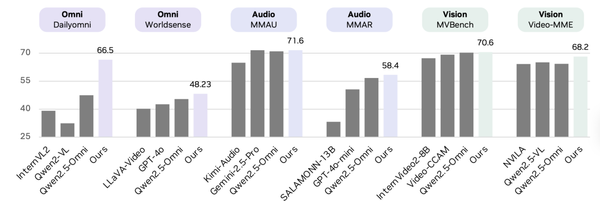Fei-Fei Li Unveils New World Model That Runs on a Single GPU
Fei-Fei Li’s World Model Startup — Latest Breakthrough
Just announced: RTFM (Real-Time Frame Model) by AI pioneer Fei-Fei Li.
This breakthrough model offers real-time operation, persistence, and 3D consistency — and remarkably:
> It runs on a single H100 GPU.
---
🌟 Three Core Design Principles of RTFM
1. Efficiency
- Achieves interactive-level frame rates for real-time inference.
- Requires only one H100 GPU to run.
2. Scalability
- End-to-end framework learns directly from massive video datasets.
- Scales naturally with data and compute growth.
- Avoids explicit 3D representations to build 3D world models.
3. Persistence
- Indefinite interaction possible; scenes remain intact over time.
- Persistent 3D worlds do not degrade when the viewpoint changes.
---
📈 Why This Matters
A robust world model can:
- Reconstruct, generate, and simulate worlds in real time.
- Maintain interaction with physical accuracy and persistence.
- Transform industries — from media to robotics.
Generative video modeling progress has led to generative world modeling.
However, compute demands for these models are expected to exceed those of today’s LLMs.
---
⚠️ The Problem with Current Approaches
Directly applying existing video architectures means:
- 60 FPS 4K streams → over 100,000 tokens/sec (comparable to Frankenstein or Harry Potter 1 in size).
- 1+ hour interactions → exceed 100M tokens in context.
- Infrastructure cannot currently support this efficiently.
Team insight:
> Simple methods that scale elegantly with compute will win long-term, benefiting from declining compute costs.
---
🎯 Their Goal: Efficient & Future-Ready
Design a world model that:
- Runs today on a single H100 GPU.
- Scales with future hardware.
- Maintains interactive frame rates.
- Keeps the world persistent and responsive.
- Offers high-fidelity previews of future capabilities now.
How They Achieved It
- Optimized the entire inference stack.
- Innovations in architecture, model distillation, and inference optimization.
---
🔄 How RTFM Differs from Traditional 3D Pipelines
Old way: Explicit 3D representations (meshes, splats) — dominant for decades.
New way with RTFM:
- Leverages generative video modeling breakthroughs.
- Single neural network handles:
- Inputs: 1+ 2D scene images.
- Outputs: Novel 2D views from new perspectives.
- No explicit 3D geometry needed.
- Uses autoregressive diffusion transformer across frame sequences.
- Trained end-to-end to predict future frames.
---
🖌️ A Learned Renderer
RTFM acts as a learned renderer:
- Transforms image frames → network activations (KV cache).
- Implicitly stores world representation.
- Attention reads from this representation to render new consistent views.
- Learns rendering effects (e.g., reflections, shadows) directly from training data.
---
🔍 Reconstruction vs Generation
RTFM blurs the line:
- Reconstruction: Interpolating between existing views (with abundant inputs).
- Generation: Extrapolating unseen content (with scarce inputs).
---
🧭 Persistence via Spatial Memory
Problem in classic models:
Autoregressive systems need to reason over ever-growing frame sequences, raising costs and limiting memory capacity.
RTFM’s solution:
- Each frame tied to a pose (3D position + orientation).
- Pose annotations become spatial memory elements.
- Soft prior: the model assumes a 3D Euclidean space without reconstructing it explicitly.
- Retrieves nearby frames when generating new ones → reduces processing load.
Context Juggling:
- Different spatial regions use different context frames.
- Maintains large-scale persistent worlds without expanding computational cost linearly.
---
🚀 Availability
RTFM is now in preview.
You can try it today — and share your feedback!
---
Reference Links:
- https://x.com/drfeifei/status/1978840835341914164
- https://x.com/theworldlabs/status/1978839175320186988
- https://www.worldlabs.ai/blog/rtfm
---
🌐 Monetizing AI-Driven Worlds
Persistent and expansive interactive worlds need efficient tech and creative distribution.
Tools like AiToEarn官网 help creators:
- Generate, publish, and earn from AI content globally.
- Publish simultaneously to:
- Douyin, Kwai, WeChat, Bilibili, Xiaohongshu
- Facebook, Instagram, LinkedIn, Threads
- YouTube, Pinterest, X (Twitter)
- Integrate AI generation, cross-platform scheduling, analytics, and model rankings.
Such ecosystems make it possible to bring RTFM-powered 3D or interactive creations to audiences worldwide — with minimal friction.
---
Would you like me to create a visual infographic summarizing RTFM’s efficiency, scalability, and persistence for quick presentation use? That could make this content far more engaging to share.




